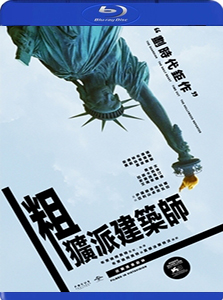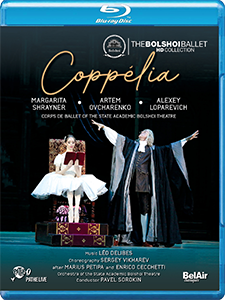 購物清單
商品分類
最新消息
2025-11-19
無名弒2,不可能的任務:最終清算,超人,厲陰宅:最終聖事,驚奇4超人… 2025-09-19
侏羅紀世界:重生,天作之合,28年毀滅倒數,萬王之王,獵金·遊戲,F1電… 2025-08-23
馴龍高手,星際寶貝:史迪奇,雷霆特攻隊,無線殺機,復仇反擊戰,絕命… 2025-07-07
美國隊長:無畏新世界,屋簷下沒有煙硝,千里馬,直到黎明,禁夜屍,會… 2025-05-15
米奇17號,關於愛的練習,曼谷淪陷, 死者,阿爾托騎士,荊棘天堂,史蒂… 2025-04-23
慾望迷蹤,鳳姐,神鬼戰士II,武替道,獅子王:木法沙,臨界點 2025-03-26
潘霍華,遷徒風險,完美伴侶,禁谷,嫌疑者的真相,鬼聲泣2,台北追緝令… 2025-03-05
猛毒最終章:最後一舞,隔壁的房間,魔法壞女巫,獵人克萊文,維和防暴… 2025-02-20
九命貓的奇幻旅程,艾諾拉,聽見顏色的女孩,王者歸來,一念菩提 2025-01-11
教宗祕密會議,異教詭屋,紅色一號,此心安處,台北追緝令,隨身危機 熱門標籤
星際異攻隊‧悟空傳‧神力女超人‧神鬼奇航 死無對證‧神鬼傳奇‧同盟鶼鰈‧刺客教條‧鋼鐵英雄‧奇異博士‧屍速列車‧神鬼獵人‧動物方城市‧死侍‧ID4星際重生 ‧蟻人‧侏羅紀世界‧大賣空‧美國隊長3‧做我的奴隸‧絕命救援‧全面攻佔2‧金牌拳手‧神鬼認證4‧吹夢巨人‧史帝夫賈伯斯‧攔截記憶碼‧翻轉幸福‧野蠻正義‧鋼鐵麥斯‧終極救援‧鐵達尼號‧飢餓遊戲‧大尾鱸鰻2‧神鬼認證‧舞力對決2‧MIB星際戰警3‧黑勢力‧公主與狩獵者‧心靈鑰匙‧火線反擊‧聖母峰‧白鯨傳奇‧地心冒險2 神秘島‧海底總動員‧江蕙 祝福‧藍光影片‧藍光電影‧
人氣排行
莫斯科大劇院芭蕾舞團 - 德利伯︰柯貝莉亞 (Delibes: Coppelia) (2019)
莫斯科大劇院芭蕾舞團 - 德利伯︰柯貝莉亞
Delibes: Coppelia
內容簡介
Bolshoi Ballet
Pavel Sorokin, Marius Petipa / Enrico Cecchetti (original choreography), Sergey Vikharev (revival and new choreographic version)
Margarita Shrayer (Swanilda), Artem Ovcharenko (Frantz), Alexey Loparevic (Coppélius), Nadezhda Blagova (automaton Coppélia), Alexander Fadeyechev (Lord of Manor), Yuri Ostrovsky (Burgomaster), Nikolay Mayorov (Chronos)
Léo Delibes’s Coppélia is not only a collection of fine dances. It is primarily an abrasive and sardonic comedy, which is somewhat unusual in the world of classical ballet. But most importantly, it is a comedy for which excellent music was composed. Pyotr Ilyich Tchaikovsky’s assessment of Delibes’s ballet scores, allegedly capable of overshadowing the choreography itself, is well known: “What beauty, what elegance, what richness of melody, rhythm and harmony!” It is not fortuitous that music from this ballet should be performed, for its own merits, during concerts. Funnily enough, the main theme of this light-hearted ballet is taken from E.T.A. Hoffmann’s anything but joyful novellas – mainly from The Sandman. In Hoffmann’s tale, the young man’s infatuation with the doll ends tragically, while in the ballet, the lively and energetic Swanilda (Frantz’s fiancée) is able to over with the old Coppélius, the cunning inventor of the “Girl with the enamel eyes” and free her lover from the doll’s poisonous charm. Coppélia was premiered in 1870 at the Paris Opera on choreographer Arthur Saint-Léon’s initiative. A virtuoso dancer, Saint-Léon was Marius Petipa’s predecessor as Head of the Petersburg Ballet. His interest in folk culture, music and dance, is mainly responsible for the appearance in the music score of such a rich “selection” of dance melodies based on folklore, and especially Slavic and Eastern European themes. A few years later, Marius Petipa and Enrico Cecchetti brought the ballet “back” to the Russia that had proved such a vivid source of inspiration for its librettist, and adapted the choreography for the Russian stage. However, this new version fell out of interest during the XXth century, until Sergey Vikharev and Pavel Gershenzon’s revival in 2009. It is here interpreted by the Bolshoi Ballet’s finest dancers: Margarita Shrayner is the witty Swanilda, and Artem Ovcharenko the love-sick Frantz. |










